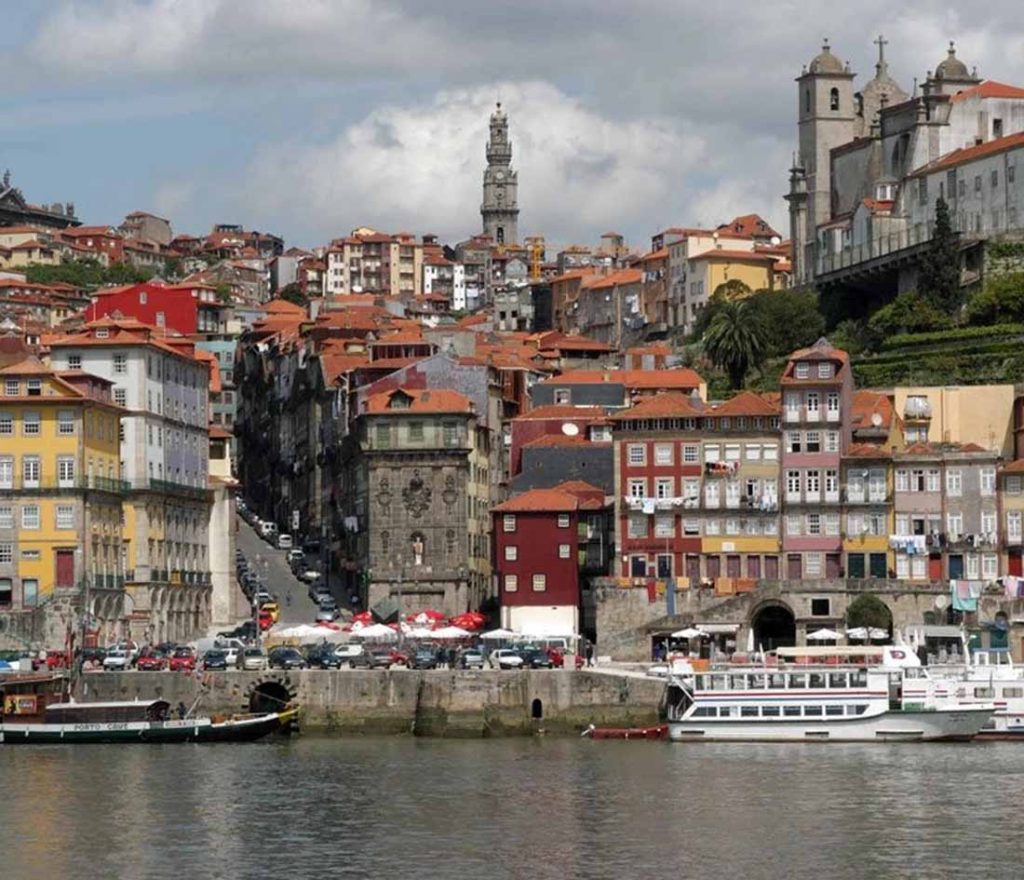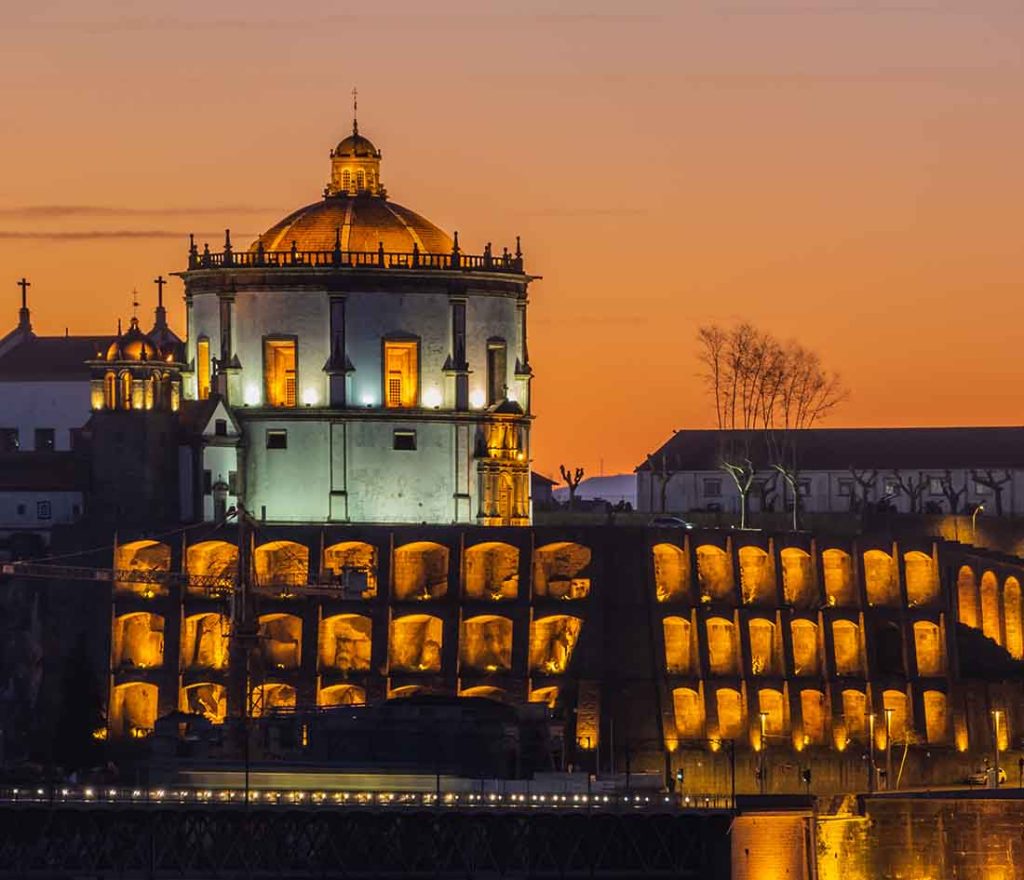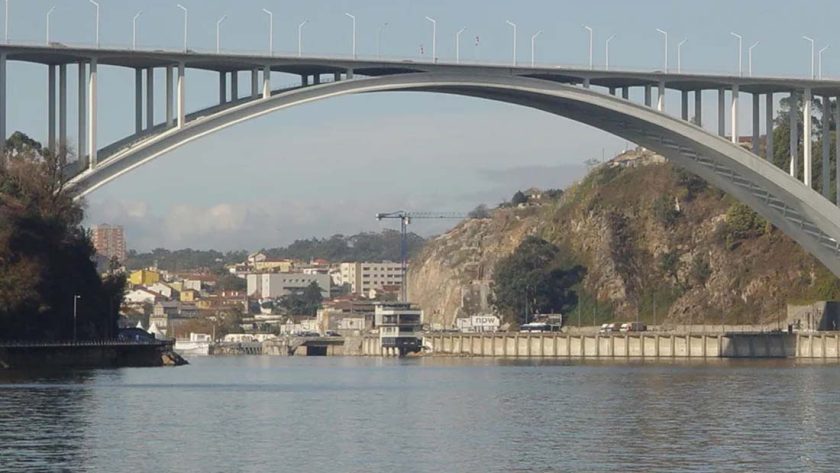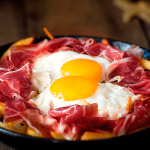When you imagine Porto, the second-largest city in Portugal, what often comes to mind is a patchwork of terracotta rooftops cascading down the hillsides toward the waters of the Douro River. This is a city that has been shaped by the flow of its river for centuries, with bridges, monasteries, wine lodges, and merchant houses all facing toward its shimmering surface. While walking through Porto’s historic center allows you to get lost in its winding streets and discover hidden courtyards, the most enchanting way to experience the city’s architecture is from the river itself.
A cruise along the Douro, whether short or extended, offers an entirely different perspective: façades once hidden behind narrow alleys reveal their grandeur, bridges rise overhead like sculptural gateways, and the city’s layered history comes alive through stone, tile, and steel. Seeing Porto from the water is like reading its architectural story in reverse, from the modern skyline at the outskirts back to its medieval heart.
The Douro as Porto’s Living Spine
The Douro River is far more than a scenic waterway. For centuries, it has been the lifeline of Porto’s growth and cultural identity. The river transported barrels of port wine from the terraced vineyards of the Douro Valley to the cellars of Vila Nova de Gaia, directly across from Porto’s Ribeira district. The same current carried building materials, workers, and goods that supported Porto’s expansion.
Today, the river is no less central. It frames the city visually, reflecting the colors of tiled façades and the shimmer of the bridges, but also functions as the perfect vantage point for visitors. When you step onto a boat—whether a traditional wooden rabelo boat once used for wine transport, or a modern sightseeing vessel—you are entering into Porto’s architectural gallery. The cityscape opens itself gradually, revealing details impossible to notice from the street.
The Ribeira: Porto’s Medieval Waterfront
The first stop in this visual journey is the Ribeira district, a UNESCO World Heritage site and the oldest part of the city. From the river, Ribeira appears almost theatrical: narrow, tall houses stacked along the embankment, painted in warm yellows, oranges, and reds, their balconies decorated with wrought-iron railings and laundry fluttering in the breeze.
From land, these streets feel compressed and maze-like, but from the water, you see the logic of their verticality. Porto’s medieval merchants built upward, maximizing scarce riverside real estate. The façades, covered in Portugal’s iconic azulejos (ceramic tiles), shine in the sunlight. From the river, you also notice how the buildings lean slightly, as if bowing toward the Douro, testifying to centuries of adaptation to the terrain and the flow of time.
It is a living museum of vernacular architecture, still vibrant with cafés, wine bars, and everyday life, yet carrying the weight of more than 800 years of history.

The Bridges: Sculptures of Steel and Stone
No river cruise in Porto is complete without passing under the city’s legendary bridges. Each one is a monument to engineering and design, reflecting the era in which it was built.
- Dom Luís I Bridge (1886): Perhaps Porto’s most iconic structure, this double-deck iron bridge was designed by a student of Gustave Eiffel. From the river, you can truly appreciate its daring arch, 172 meters in span, rising like an elegant curve of steel that connects Porto with Vila Nova de Gaia. As your boat glides beneath it, the interplay of light and shadow on its riveted framework feels almost cathedral-like.
- Ponte das Barcas (1806, no longer standing): Though destroyed in the early 19th century, the memory of this floating bridge lives on in the city’s consciousness. The cruise guides often recount its tragic collapse during the Napoleonic Wars, reminding you that Porto’s bridges are not only functional but deeply tied to its history.
- Maria Pia Bridge (1877): This earlier Eiffel-designed masterpiece is now out of use, but from the river, its slim iron arch is breathtaking in its delicacy. It speaks to the optimism of the industrial era, when railways and steel connected Porto to the wider world.
- Arrábida Bridge (1963): Modern yet graceful, this reinforced concrete arch was once the largest of its kind. From the river, it feels monumental, a symbol of Porto’s mid-20th-century expansion.
Passing under these bridges one by one is like moving through a chronological exhibition, each span telling a chapter of Porto’s urban and architectural narrative.
Vila Nova de Gaia: Wine Cellars and Warehouses
Directly across the river from Porto lies Vila Nova de Gaia, home to the world-famous port wine lodges. From the boat, you see a different kind of architecture: massive stone warehouses with simple, functional lines, each roof bearing the painted name of a port house—Taylor’s, Sandeman, Graham’s, and many more.
These buildings may lack the ornamentation of Porto’s Ribeira, but their significance is immense. They are monuments of commerce and craftsmanship, designed to age wine in cool, stable conditions. From the river, they form a visual counterpoint: Porto’s ornate façades facing Gaia’s pragmatic warehouses, a dialogue between beauty and utility across the water.
Religious Icons on the Hills
As the boat moves along the river, your eyes are drawn upward, to the religious landmarks that crown Porto’s hills.
- Sé do Porto (Porto Cathedral): Rising from its fortress-like base, the cathedral is one of the city’s oldest buildings, dating back to the 12th century. From the river, its massive walls look almost defensive, a reminder of Porto’s medieval struggles.
- Church of São Francisco: This Gothic structure, with its later Baroque interior, reveals only hints of its ornate nature from the river, yet its stone silhouette is unmistakable.
- Mosteiro da Serra do Pilar: On the Gaia side, this former monastery stands proudly above the Dom Luís I Bridge. Its circular church and terraced cloister dominate the skyline. From the river, its symmetry and commanding position illustrate the power of religious architecture in defining Porto’s silhouette.
These sacred landmarks, perched on high, frame the river’s lower districts and serve as orientation points for travelers.

Modern Interventions Along the Waterfront
While Porto’s heritage is its strongest visual identity, the river also reveals the city’s embrace of modernity. Sleek new hotels, glass-fronted restaurants, and contemporary cultural centers appear along the banks, blending with centuries-old façades.
From the boat, you notice how carefully these modern structures are integrated into the existing fabric. Architects in Porto often choose subtle interventions—transparent glass, neutral tones, low-rise profiles—so that the older buildings retain their dominance. It is a lesson in urban design: progress without erasure.
The Changing Colors of the City
One of the most captivating aspects of seeing Porto from the river is the way light transforms the architecture. In the morning, soft light emphasizes the pastel shades of the tiled façades. By midday, the sun reflects sharply off the river, making the colors more vivid. In the late afternoon, warm golden light drapes over the terracotta rooftops, creating a painterly scene that seems almost unreal.
At night, the city becomes a glowing amphitheater. The bridges are lit, the Ribeira shimmers with reflections, and the whole city appears as a stage set against the darkened hills. From the water, this transformation feels magical, as though you are watching Porto put on different costumes throughout the day.
Why the River Perspective Matters
Walking through Porto immerses you in details: tiled doorways, cobbled streets, hidden staircases. But from the river, you see the city as a whole, as a living organism. The hills, the bridges, the landmarks, and the neighborhoods all connect in a single panoramic view.
This perspective also emphasizes the relationship between architecture and geography. Porto is a city of slopes and layers, and only from the water can you see how the buildings stack upon each other, how the river dictated urban growth, and how the bridges stitched together otherwise divided worlds.
For travelers, this view also offers a deeper appreciation of why Porto feels both intimate and monumental. From the streets, it is human-scaled; from the river, it is epic.
Practical Tips for a River Cruise
If you are planning to see Porto’s architecture from the water, here are some considerations:
- Types of Cruises: Short sightseeing cruises of about an hour cover the main bridges and central districts. Longer excursions may take you upriver into the wine country of the Douro Valley.
- Boats: Traditional rabelo boats offer authenticity and charm, while modern vessels may provide greater comfort and commentary.
- Timing: Daytime cruises highlight architectural detail, while evening cruises provide atmospheric views of illuminated landmarks.
- Seating: If possible, sit on the outer deck to have an unobstructed view and better photo opportunities.
- Clothing: The river can feel cooler and breezier than the streets, so bring a jacket, even if the day seems mild.
Porto is a city that rewards exploration from multiple angles, but to truly grasp its essence, you must see it from the Douro River. The architecture tells a story of trade, resilience, faith, and creativity—one best understood when the façades rise like a living tapestry before your eyes.
A cruise along Porto’s riverfront is not simply a sightseeing excursion. It is an immersion in history, a meditation on the harmony between natural landscapes and human construction, and an opportunity to witness one of Europe’s most captivating cities in its most authentic light.
From the water, Porto reveals itself as more than just a city of wine and bridges. It is a city that has always faced the river, shaped by it, framed by it, and endlessly reflected upon it.



